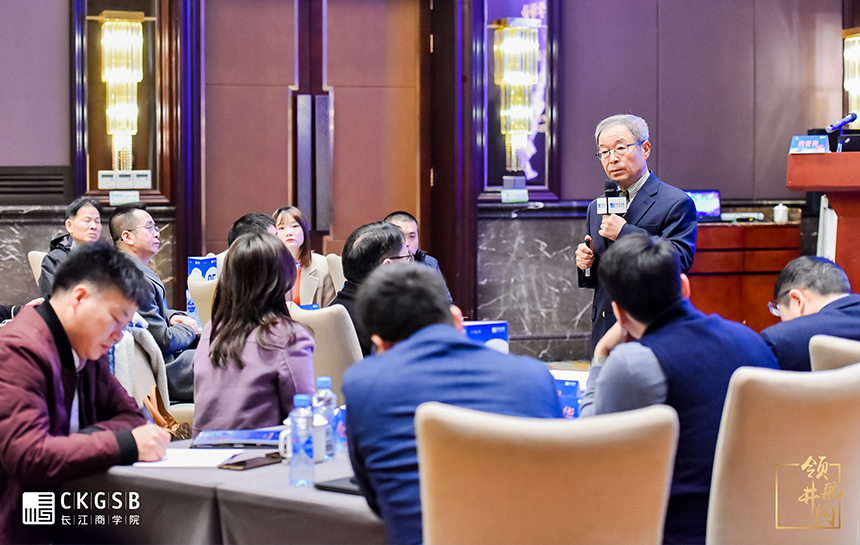The combination of new and old is a driving force behind parts of China’s F&B innovation
Grabbing a coffee on the way to work is the norm for workers across the world and a trend increasingly catching on in China. But in coffee shops around the country, people are lining up not just for the standard fix of Americanos and Lattes, but also for new-fangled experimental drinks.
In September 2023, Luckin’ Coffee and Moutai teamed up to create an unusual baijiu-flavored latte. The brand collaboration, bringing together the new—coffee in China—and the old—baijiu, which has always been China’s number one selling liquor—is one of many examples of the new experimental trends sweeping across in the country’s food and beverage (F&B) industry.
This tipsy cup of joe had Chinese social media up in a storm. “Can we drive a car after drinking the Moutai coffee?” was the number one subject on Chinese social network Weibo that month.
Chinese consumers are up for culinary experimentation—and F&B brands are happy to go the extra mile for them. The vast diversity of F&B offerings growing throughout the country continually surprises even Chinese consumers themselves as they stumble upon obscure regional foods and new culinary trends hyped on social media daily.
While Chinese food generally enjoys global recognition, the remarkable dynamism of China’s domestic F&B industry often goes unnoticed outside the country. From budget-friendly street fare to multiple Michelin-starred dining experiences, the Chinese F&B industry is an ecosystem unlike any other worldwide.
“F&B demands [in China] are diversifying, opening up opportunities for a wider range of brands,” says Allison Malmsten, public research director at Daxue Consulting specializing in China’s food trends.
A Thriving Market
China is the world’s largest food market by revenue, having surpassed the US in 2011 and undergoing robust growth ever since. By 2023, it generated $1,493 billion and is projected to grow by around 8% annually in the coming years. The F&B landscape comprises 2 million full-service catering businesses and a bar industry projected to hit a ¥1.6 trillion ($219.3 million) market size by the end of 2023.
Chinese consumers exhibit an ever-growing willingness to spend on F&B, although the recent pandemic created a sizeable bump in the road. According to a Rakuten Insights survey from December 2022, approximately 30% of respondents in China typically spent between ¥51 and ¥100 ($7-14) per person on dinner when dining out—the equivalent of an entire day’s income when compared with the average per capita disposal income of households.
This of course, comes after the COVID-19 pandemic which had a notable impact on consumer spending, evidenced in part by the 16.6% decline in China’s total catering revenue in 2020. As the economy continues to grapple with recovery, Chinese residents are still somewhat cautious on spending, which has led to a shift in F&B tastes.
“Consumers now care more about cost-effective products,” says Rio Liu, co-founder and Asia sales director for Shanghai-based Peddlers Gin Company. “Higher-end F&Bs are more challenging to run.”
The pandemic spurred rapid industry evolution and the introduction of novel F&B business models. Online food delivery, already a mainstay in China, surged, while pre-made meals are gaining traction among food establishments and consumers. Although concerns over the food safety and health benefits of pre-made meals persist among some skeptics.
“When it comes to pre-made foods, people link it to plastic packaging, excessive additives in their perception,” says Yaling Jiang, founder of research and strategy consultancy ApertureChina and newsletter Following the Yuan. “There’s so much pushback against it from the consumers that it requires manufacturers to be ultra-transparent with steps such as raw ingredients, preparation, processing, packaging and reheating.”
Internationally, China plays a pivotal role in both importing and exporting agricultural products. It leads in producing various goods like rice, meat and corn, but the country increasingly depends on imports such as soybeans and dairy products.
“Changing diet patterns have also driven up China’s imports of edible oils, sugar, meat and processed foods,” said Zongyuan Zoe Liu, the Maurice R. Greenberg Fellow for China Studies at the Council on Foreign Relations, in a January 2023 paper.
Emerging Trends
Despite the limitations of the pandemic, several new food and beverage trends have mushroomed across China in recent years. Small-scale Chinese fusion bistros, for instance, combining Chinese and Western cuisines with high-end drinks, have gained traction among young Chinese diners for their intimate, modern and often social media-worthy atmosphere.
“From the Western-style bistro in Shanghai in the early years to the rapidly growing modern Chinese bistro, Chinese consumers still enjoy the social entertainment scene of eating and drinking together,” says Liu. And, according to Liu, with heightened competitiveness in the industry, venues are compelled to offer distinct experiences and competitive prices.
For instance, Ber2 Bistro in Zhengzhou, a city renowned for its historical significance as one of China’s ancient capitals, blends French fine dining with the distinctive flavors of local Henan cuisine. Among their signature dishes is the yellow croaker cooked with clams in spicy soup, a traditional hot pepper soup originating from the region.
A diner shared their experience on the restaurant’s Dianping page, China’s equivalent to Yelp, stating, “This dish is a captivating fusion with unique Henan notes, and the spicy soup evokes nostalgic flavors reminiscent of my childhood.”
Purchasing a specialty coffee in the provincial capital of Hunan, Changsha, for example, can cost less than $1. But despite such low prices, cafes, bars and other drinking establishments in China have seen an annual revenue increase of 16.4% to $9 billion over the past five years, including a notable 20.1% surge in 2023 alone.
Despite the traditional dominance of tea in the Chinese beverage market, China has emerged as one of the fastest-growing coffee markets globally, with an increasing number of coffee shops across the country. Shanghai is now home to the most coffee shops of any city in the world.
“There are a growing number of coffee aficionados that are looking for more sophistication. This drives coffee shops to explore and craft unique tastes, simultaneously educating consumers to appreciate higher quality coffee,” says Hao Yang, a financial professional in Shanghai and coffee as well as cocktail enthusiast. “It feels the same for alcoholic drinks as well.”
The trend of infusing Chinese elements and promoting health consciousness in coffee culture has also flourished throughout China. In Foshan, situated in the central Guangdong province, a coffee shop named Wuwei specializes in crafting “Chinese coffee” that incorporates traditional Chinese medicine ingredients like dried citrus peel and female ginseng. These additions are believed to offer health benefits, catering to the preferences of young professionals who seek the energizing effects of caffeine while also prioritizing their well-being to combat work-related burnouts.
Part of a healthy diet, plant-based drinks like soy, almond and multigrain products have long been embraced in China thanks to the country’s Buddhist traditions. But recent years have seen the rise of oat and coconut drinks among young consumers, mostly influenced by the entry into the market of Western brands and tastes. Brands such as Oatly have helped drive not only the popularity of their own products, but also the coffee industry as a whole, and there have been other cases, too.
Luckin’ Coffee’s success with its raw coconut latte basically helped the company turn around after it had a financial scandal. “It sold 300 million orders in two years after launching in 2021,” says Jiang. “As a result FreeNow, a supplier of Luckin’s coconut drinks has also become a consumer-facing business.
Molecular mixology and innovative cocktails have also garnered significant popularity, catering to consumers seeking novel taste experiences, and shifting away from traditional liquors like baijiu. Imported spirits, low-alcohol drinks and other innovative options have flooded the marketplace and there are bars across the country offering both high-end foreign and domestic wines.
Even Chinese tea is undergoing a rebranding, with young tea manufacturers innovating new flavors, products, store decor and marketing strategies, catering to diverse consumer preferences.
Consider Reverse, a dual-functioning establishment in Chengdu, known for its daytime operation as a teahouse and transformation into a bar by night, reflecting the city’s rich traditional teahouse culture. Bartender Guo Bing shared insights with RADII in 2022, expressing his passion for crafting tea-infused cocktails. “I really love making cocktails, but I’ve also always loved drinking tea. So it was natural for me [to mix tea and alcohol],” he said. “Tea has plenty of interesting aromas and fragrances that are just amazing to experiment with, and they make for great cocktails. The main challenge is ensuring that their bitter notes are not over-extracted when making tea-infused liquor.”
These F&B trends are also observable in less developed Chinese cities, but to a more limited extent. Yang noted that while smaller cities may lack the purchasing power for fine dining experiences compared to tier-1 cities, night markets and street stalls thrive more in these areas. Big cities like Shanghai and Shenzhen have banned street vendors for decades and only eased the restrictions on hawking recently to boost the economy after the pandemic.
Social Media Eats First
The changing trends in the Chinese F&B industry are largely driven by and targeted at the younger generation of consumers, known for their willingness to spend on experiences. The desire for internationalized food experiences and the ease of access through delivery apps like Ele.me and Meituan facilitate these trends.
However, the primary driver behind the popularity of many F&B establishments is social media. According to Liu, approximately 70% of Gen Z’s spending on F&B was originally intended for the production of social media posts. “This has led to many innovations that need to be more about ‘looks good,’ rather than just product quality,” says Liu.
The driving force behind this are the many key opinion leaders (KOLs) that wield significant influence in shaping F&B trends, with consumers trusting their recommendations over brand endorsements.
According to Chanmama, a social media ecommerce data analysis platform, KOL Shikele (是可乐) emerged as the leader on Douyin’s food sales charts in May of 2023. Throughout the month, she hosted 24 livestreams, amassing a collective increase of 214,000 fans and achieving daily sales ranging between ¥2.5 million to ¥5 million ($350,000 to $700,000). Now with over 3 million fans on Douyin, Shikele sells an array of food items, ranging from fruits to dim sum.
Social media platforms such as Douyin, Xiaohongshu, Bilibili, Weibo or even food documentaries have amplified the exposure of catering services, contributing to their visibility and popularity. “Even if a store does not have food delivery service or even tastes average, as long as it can increase its online exposure, it can gain consumer attention for a period of time,” says Yang.
Cheers Burger, an internet-famous burger takeaway joint in Shanghai, gained widespread attention well before its official opening in October last year. Its distinctive vintage industrial architectural style continues to lure numerous KOLs and regular customers, drawing them to take photographs in front of the shop.
“There is definitely a rising demand for F&B content on social media,” says Stephanie Cheung, director of Vermilion Asia, which oversees Xiaohongshu accounts for numerous F&B brands. “KFC set a record with nearly 3,000 posts on Xiaohongshu among F&B brands in a 90-day period in late 2023, while investing approximately ¥7.7 million ($1 million) in these efforts.”
Bakery brand Bakehouse in Hong Kong, which has opened five stores within five years, has been a great example of what social media can produce. According to Cheung, “Xiaohongshu catapulted the brand to prominence, making it a top destination for mainland tourists visiting Hong Kong.” The store sells over 900 egg tarts daily, with peak times seeing sales of 300 in just 15 minutes.

Brands are actively pursuing strategies to maintain relevance on social media and to engage younger consumers. One popular approach involves forging collaborations with other, often seemingly unlikely, brands. For instance, Kweichow Moutai the top baijiu brand, and one half the liquor-latte collaboration with Luckin’, also joined hands with Mengniu Dairy in May 2023 to launch its flagship ice cream store. These campaigns are designed to bring Moutai to the attention of younger generations, as the typical baijiu consumer is getting older and customer numbers are dropping.
Luckin’ Coffee, meanwhile, experienced material shortages for the product due to unprecedented demand for the initial batches of the products.
“It is a smart, and potentially successful, way to increase popularity and visibility,” says Yang. “In China, most young people believe Moutai is a consumer product that belongs to the previous generation. But these crossovers are bringing Moutai closer to young people and increase the potential for Moutai consumption in the future.”
Malmsten also sees co-branding and IP collaborations as effective tools for F&B brands to generate excitement in China.
“On the streets of Shanghai we can easily find coffee flavors like orange juice coffee, cucumber latte, rose latte, osmanthus latte, and of course, the recent baijiu coffee,” she says. “This open and experimental attitude towards food and drink creates opportunities for brands to be creative in the industry, allowing them to stand out with lower risk of backlash, compared to Western countries.”
Tradition endures
Despite the appearance of new trends, traditional Chinese food continues to dominate the country’s culinary scene.
“Although in cities or regions with limited exposure to foreign cuisine, the initial introduction of international dishes might capture a segment of the market, the majority tend to favor traditional Chinese food,” says Yang. “Moreover, traditional Chinese cuisine has evolved by incorporating new flavors and enhancing service quality, which has garnered favor among younger demographics.”
Encouraged by documentaries, food vlogs and social media, authentic regional cuisines have gained popularity across China. Dishes like ‘Stilted Beef’ from Leshan and Kaili sour fish soup from Guizhou, once limited to their respective regions, are now found across the country.
Chinese culinary influence has also extended beyond China and Asia, with brands like hotpot chain Haidilao and milk tea shop HeyTea expanding overseas.
“I see more ‘going abroad’ examples in beverage and hotpot, which have lower barriers to understanding for audiences abroad,” says Jiang. “Having had a stable reputation in China, they have no problem attracting the initial audience who are Chinese diaspora. And locals will follow suit through the core audience.”
But Jiang also pointed out that while Chinese food has gained recognition abroad, successful international operations hinge on the quality of service, products and overall experience. HeyTea’s franchise in London faced a backlash due to supply issues, highlighting the challenges faced by brands expanding globally.
Regional cuisines also encounter hurdles in their global expansion. Chinese culinary representation abroad primarily revolves around Cantonese and Sichuanese cuisines. The former owes its prevalence to historical migration, while the latter has gained popularity abroad thanks to its tantalizing flavors.
While some may argue that popular Chinese chains abroad, such as P.F. Chang’s and Panda Express, are “inauthentic,” there are many who see these changes as adaptations necessary for localization.
“Food evolves with time and location, it’s unfair to ask it not to change,” says Jiang. “Also, from a product perspective, the likes of P.F. Chang’s Panda Express serve the local audience, not visitors from China, so it’s unfair to call it inauthentic.”
“This is normal,” agrees Liu. “All commercial products in foreign countries need an adjusted strategy. KFC sells Chinese food in China, but not in America.”
Trends and Beyond
While the continued changes of the F&B industry as a whole are indisputable, the transient nature of social media-driven trends challenges businesses to constantly innovate and remain relevant. Restaurants must invest in food quality and service excellence to sustain long-term popularity amidst ever-changing trends. Restaurants vie to maintain an online presence and remain relevant by frequently updating menus and decor or through new and unique collaborations.
“Dining is no longer just about eating,” says Cheung. “It now intertwines with the subjects that resonate with and captivate younger audiences, and there will certainly be a continued increase in catering’s investment in marketing and collaborations with KOLs.”
Additionally, as in any country, social media platforms have an impact on China’s diet culture through the dissemination of health-related information, accurate or otherwise. Chinese celebrities such as actors Qin Hao and Yin Zheng have promoted various diets on social media, and this phenomenon has resulted in a diversification of F&B demands, opening up opportunities for a wider range of brands.
“With an abundance of information there are more and more diverging ideas of what is ‘healthy,’” says Malmsten. “For example, there is a consumer tribe that eats a ‘steak diet’ where steak is the focal food of all meals, meanwhile there is an increasing number of vegetarian consumers.”
The influence of Western cuisines high in fat have also resulted in a growing number of health concerns for China’s citizens. “Obesity rates in our country are on a concerning rise,” said Zhang Zhongtao, deputy director of Beijing Friendship Hospital, during a conference held earlier this year in Beijing. “More than 50% of adults are overweight or obese, with the proportion of obese individuals increasing at a higher rate than those overweight.”
The burgeoning demand for healthy, affordable and enjoyable dining experiences has intensified competition within the catering industry, posing challenges and talent shortages. “There are definitely challenges for latecomers to the market that lack adequate capital support to stand out in the competitive landscape,” says Yang.
Moreover, the shortage of talented chefs, attributed to social status perceptions, presents a significant industry hurdle. “Chef isn’t a highly respected profession and there are historical reasons behind it,” says Jiang. “The educational barrier isn’t high, and in the 1970s and 1980s, kids learned to become a chef not because they loved it, but because you got fed.”
And, according to Jiang, of those who are entering the industry now, a growing number of educated young Chinese are focusing on the Western food industry rather than traditional Chinese cuisine, reflecting a broader trend in the evolving landscape of China’s F&B industry.
Full plates
Overall, China’s F&B industry continues to evolve rapidly, driven by younger consumer preferences for unique experiences, healthy options and convenience. Despite economic fluctuations, Cheung shares, the country’s catering revenue is expected to grow steadily at least through 2026 when it is estimated to reach about ¥8.165 billion ($54 million).
China’s F&B industry, once rooted in centuries-old traditions, is now undergoing swift changes reflective of modern influences and a growing internationalization.
“China represents a huge market that never fails to attract individuals eager to engage in competition,” says Yang. “The country’s catering industry will continue to seek inspiration globally, embracing diverse raw materials, food processing techniques and production methods. Chinese consumers ardently look for innovative dining experiences, thus compelling China’s F&B industry to undergo continual evolution and adaptability.”


















